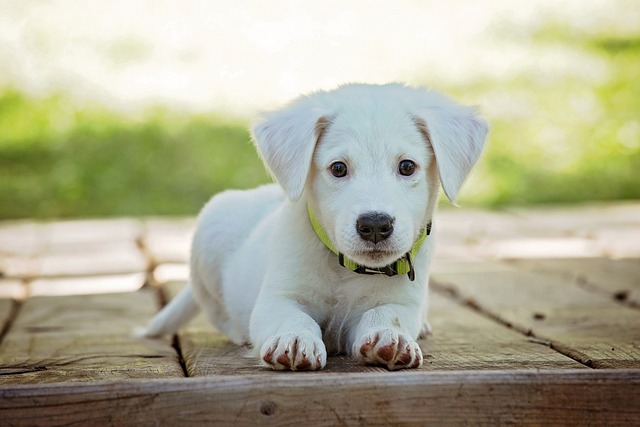Brain scans reveal how dogs recognise owners as family over other fellow dogs
A recent neuroimaging research on odour processing in the dog brain provides the most concrete evidence that they are hopelessly dedicated to humans.

We’ve read of studies on what dogs dream about and how classical music indicated short-term stress in dogs. It’s also really satisfying to read about research on how dogs feel about their humans.
We doubt this was the first of its type, and we certainly hope it is not the last, but discovering how our furry family feels about us is quite delightful.
An article published in National Geographic in 2014 highlighted what dogs think about while they are with their people.
Surprisingly, unlike what Scooby Doo may want us to think, it’s not simply about when you will feed them.
“A dog encountering its owner’s smell could feel in some way like a person reacting to the perfume or cologne of a loved one, according to study leader Gregory Berns, a neuroeconomist at Emory University in Atlanta.” says a National Geographic article.
In other words, our furry family members feel happy when they scent their human parents.
Scientists are looking into the minds of dogs
The way dogs thump their tails, cover our laps, and steal our pillows suggests that they adore us back. But how can we be sure if dogs can’t tell us what’s going on inside their fuzzy heads?
Actually, it’s true. We’re getting a clearer image of what’s going on within the canine skull thanks to recent advances in brain imaging technologies.

Scientists are looking into the minds of dogs. And what the studies demonstrate is good news for all dog owners: dogs not only appear to love us back, but they also perceive us as family. It turns out that dogs rely on people for affection, safety, and everything in between more than they do their own species.
A recent neuroimaging research on odour processing in the dog brain provides the most concrete evidence that they are hopelessly dedicated to humans. Emory University animal cognition researchers taught dogs to lie motionless in an MRI scanner and utilised fMRI (functional magnetic resonance imaging) to analyse their brain reactions to the smells of people and dogs, both familiar and unfamiliar. Because dogs traverse the world with their noses, the way they absorb smell can provide valuable insight into social behaviour.
The scientists discovered that the perfume of dogs activated the “reward centre” of their brains, known as the caudate nucleus. Dogs prioritised the thought of humans over anything or anybody else among all drifting aromas to take in.
The findings of this study matched with an earlier experiment conducted in Budapest in which researchers explored how dogs respond to noises. When dogs hear noises with joyous undertones, their reward centres light up and they become thrilled, much like humans.
The study discovered striking parallels in the way canine and human brains perceive emotionally charged vocal sounds, among other unexpected discoveries. Happy noises, in particular, were discovered to light up the auditory cortex in both species. This similarity reflects the dog-human bond’s very powerful communication mechanism.
In sum, dogs are not just able to detect our tiny mood changes; they are biologically programmed to do so.
Recent neuroscience is also supported by behavioural studies. Attila Andics, a neuroscientist and lead author of the study, claims that dogs communicate with their human guardians in the same manner as infants do with their parents. When dogs are terrified or anxious, they run to their owners in the same way that disturbed toddlers run to their parents. This is in sharp contrast to other domesticated animals, such as cats and horses, who will flee.
Dogs are also the only non-primate animals that look people in the eyes. Andics and other researchers discovered this approximately a decade ago while studying the domestication of wolves, which he assumed would share that attribute. They attempted to raise wolves like dogs. Dogs desire eye contact from people, but not from their biological dog parents.
“Bonding with owners is much more important for dogs than other pets,” says Andics.
Humans and dogs may share feelings just as much
People, it seems out, reciprocate dogs’ deep sentiments. Researchers from Massachusetts General Hospital monitored human brain activity in reaction to photographs of dogs and children in an October study published in PLOS One. Women who had dogs and infants for at least two years were eligible to participate in the study. Emotion, reward, affiliation, visual processing, and social engagement were all triggered by both types of photographs. Essentially, both furry and (usually) non-furry family members make us joyful.
Laurie Santos, the principal researcher at Yale’s Canine Cognition Centre, stated, “Sometimes our intuition about what’s going on inside dogs’ heads is dead-on.” “Like, that dogs are seeking out help from us — and that’s true based on studies — which is different from even their closest relatives, wolves.”
It’s not always obvious what specific want or concern is hiding behind a dejected dog’s expression. However, we may rejoice in the knowledge that our dogs love us just as much—if not more—than we did. They consider us family, even if they aren’t our actual children. And to ourselves? They will always remain our babies.
You might also be interested in – Australian researchers constructing the world’s inaugural human brain-scale computer, to be operational next year



